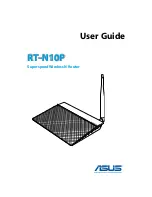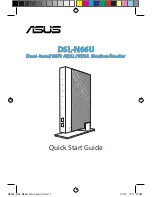
6 - 11
• It is recommended that a valid certificate be issued and installed on devices providing 802.1X EAP. The certificate should
be issued from an
Enterprise
or
public certificate authority
to allow 802.1X clients to validate the identity of the
authentication server prior to forwarding credentials.
• If using an external RADIUS server for EAP authentication, ensure that the round trip delay over the WAN does not exceed
150 ms. Excessive delay over a WAN can cause authentication and roaming issues and impact wireless client performance.
6.1.2.2 MAC Authentication
Configuring WLAN Security Settings
MAC is a device-level authentication method used to augment other security schemes. MAC can be used open, with
WEP 64
or
WEP 128
,
KeyGuard
,
TKIP
or
CCMP
.
MAC authentication enables device-level authentication by permitting WLAN access based on device MAC address. MAC
authentication is typically used to augment WLAN security options that do not use authentication (such as static
WEP
,
WPA-PSK
and
WPA2-PSK
). MAC authentication can also be used to assign VLAN memberships, Firewall policies and time and
date access restrictions.
MAC authentication can only identify devices, not users. MAC authentication only references a client’s wireless interface card
MAC address when authenticating the device, it does not distinguish the device’s user credentials. MAC authentication is
somewhat poor as a standalone data protection technique, as MAC addresses can be easily spoofed by hackers who can mimic
a trusted device within the network.
MAC authentication is enabled per WLAN, augmented with the use of a RADIUS server to authenticate each device. A device’s
MAC address can be authenticated against an access point’s local RADIUS server (if supported) or centrally (from a datacenter).
For RADIUS server compatibility, the format of the MAC address can be forwarded to the RADIUS server in non-delimited and
or delimited formats:
To configure MAC authentication on a WLAN:
1. Select the
Configuration
tab from the Web UI.
2. Select
Wireless.
3. Select
Wireless LANs
to display a high level display of existing WLANs.
4. Select the
Add
button to create an additional WLAN, or select an existing WLAN and
Edit
to modify its security properties.
5. Select
Security
.
6. Select
MAC
as the Authentication Type.
Selecting MAC enables the radio buttons for the
Open
,
WEP 64
,
WEP 128
,
WPA/WPA2-TKIP
,
WPA2-CCMP
and
Keyguard
encryption options as additional measures for the WLAN.
7. Either select an existing AAA Policy from the drop-down menu or select the
Create
icon to the right of the AAA Policy
parameter to display a screen where new AAA policies can be created. A default AAA policy is also available if configuring
a WLAN for the first time and there’s no existing policies. Select the
Edit
icon to modify the configuration of a selected
AAA policy.
Authentication, Authorization, and Accounting
(AAA) is a framework for intelligently controlling access to the wireless
client managed network, enforcing user authorization policies and auditing and tracking usage. These combined processes
are central for securing wireless client resources and wireless network data flows. For information on defining a new AAA
policy, see
8. Select the
Reauthentication
check box to force MAC supported clients to reauthenticate. Use the spinner control set the
number of minutes (from 30 - 86,400) that, once exceeded, forces the EAP supported client to reauthenticate.
9. Select
OK
when completed to update the WLAN’s MAC configuration. Select
Reset
to revert the screen back to the last
saved configuration.
Summary of Contents for WiNG 5.7.1
Page 1: ...WiNG 5 7 1 ACCESS POINT SYSTEM REFERENCE GUIDE ...
Page 2: ......
Page 3: ...WING 5 7 1 ACCESS POINT SYSTEM REFERENCE GUIDE MN001977A01 Revision A April 2015 ...
Page 4: ...ii WiNG 5 7 1 Access Point System Reference Guide ...
Page 24: ...1 4 WiNG 5 7 1 Access Point System Reference Guide ...
Page 36: ...2 12 WiNG 5 7 1 Access Point System Reference Guide ...
Page 72: ...3 36 WiNG 5 7 1 Access Point System Reference Guide ...
Page 470: ...5 386 WiNG 5 7 1 Access Point System Reference Guide ...
Page 472: ...6 2 WiNG 5 7 1 Access Point System Reference Guide Figure 6 1 Configuration Wireless menu ...
Page 624: ...7 46 WiNG 5 7 1 Access Point System Reference Guide ...
Page 724: ...9 56 WiNG 5 7 1 Access Point System Reference Guide ...
Page 783: ...12 35 Figure 12 46 Device Summary screen 4 Click File Management ...
Page 816: ...12 68 WiNG 5 7 1 Access Point System Reference Guide ...
Page 1006: ...13 190 WiNG 5 7 1 Access Point System Reference Guide ...
Page 1026: ...14 20 WiNG 5 7 1 Access Point System Reference Guide ...
Page 1028: ...A 2 WiNG 5 7 1 Access Point System Reference Guide ...
Page 1089: ......
Page 1090: ...MN001977A01 Revision A April 2015 ...
















































